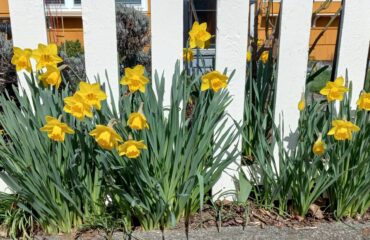 The staff of the Bunker Hill Community College community education department has taken the art of making connections to another level.
The staff of the Bunker Hill Community College community education department has taken the art of making connections to another level.
Today, people are seeking them out on a daily basis, and it’s partially thanks to a happenstance LinkedIn strategy the staff of three adopted in 2010.
When Wayne K. Johnson came on board in 2010 as the director of the community education department at Boston-based Bunker Hill Community College, the department had no LinkedIn presence at all. Now, just three years later, Johnson and his two colleagues, Sonia Sharma and Melissa Cano, have grown their network to include more than 15,000 first-degree connections.
And the three didn’t grow that network by sending connection invitations to just anyone. First, the community education department tapped college databases of former community education instructors, companies that had contracted with the department and former students. Johnson also got a list of all BHCC alumni emails and invited them to connect, too.
Then, Johnson launched a BHCC Community Education group and the three strategically selected LinkedIn groups that included people in the Boston area. In total, the three staff members of the community education department at BHCC belong to 150 LinkedIn groups.
In a little more than a month, the department’s network had already grown to 2,000 people.
But what tangible benefits can 2,000 LinkedIn connections really provide?
Johnson said that shortly after he, Cano and Sharma started growing their networks and posting regular updates about the happenings in the department which provides corporate training, community education, career programs and more, people started contacting them every day, asking when they could sign up for courses, if they could teach a course, or other questions about the department.
“It just spiraled upwards like a concentric circle and it just kept growing and growing and growing,” Johnson said.
While some people worry about connecting with someone they haven’t met in person, Johnson and his colleagues operate on the shared connection principle: If Johnson is connected with Sue and Sue is connected with Bob, Bob thinks Johnson is OK because of his connection with Sue.
“Don’t be afraid to ask people to connect,” Johnson said. “The worst they can say is ‘No.'”
Since the community education department adopted its LinkedIn strategy in 2010, revenue has increased by 58 percent, Johnson said. The number of courses run by the department has also increased by 44 percent in the same period.
“If you told me three years ago that people would be contacting me every day and that revenues would increase 58 percent in three years, I would have thought it was a joke,” Johnson said.
In addition to posting updates about courses, schedules and other department happenings, Johnson and his colleagues participate in discussions and actively engage with other users.
Johnson recently posed a question about changing the name of his department on the LERN’s LinkedIn group page and got 19 responses.
“With our LinkedIn accounts, via our contacts and groups, we are able to communicate and market to about 100,000 individuals in the Boston area affiliated with our accounts and connected via our groups,” Johnson said.
Not only has his department seen success in soliciting advice from others in the industry, they’ve also found their new network to be a great source of talent.
Prior to launching a new course, the three community education staff members posted the announcement to their LinkedIn pages and to their groups. Within 24 hours, they had received more than 100 resumes from who Johnson said were “amazingly qualified people.”
Johnson said that people shouldn’t be intimidated by taking on the technique.
“It’s not that time consuming,” Johnson said. “It’s literally less than 30 minutes a day.”
